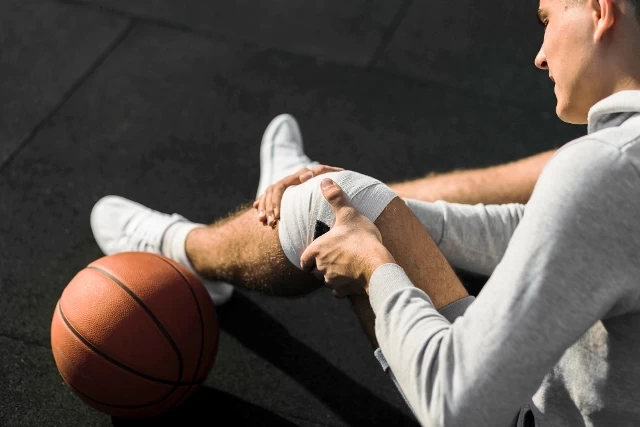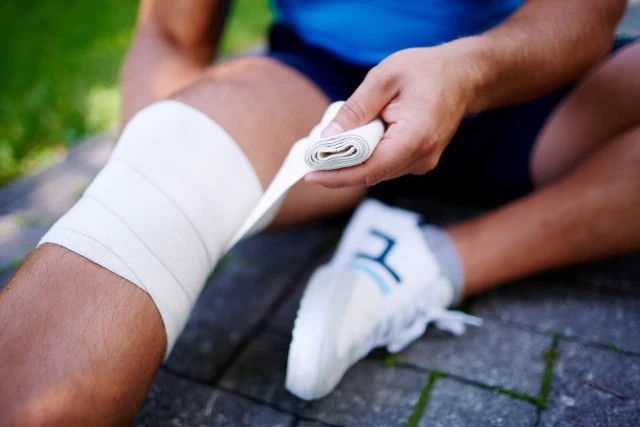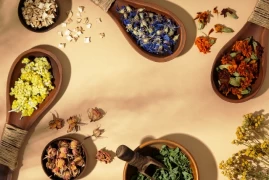
Homeopathy in Sports Injuries
- Homeopathy in Sports Injuries
- Causes of Sports Injuries
- Types and Symptoms of Sports Injuries
- Types and Symptoms of Injuries
- Homeopathic General Approach to Sports Injuries
Sports are activities that require individuals to be at their highest mental and physical functions, involving coordination and orientation. Sports injury refers to temporary or permanent damage that may occur in the body during sports activities. Engaging in sports without proper preparation and sufficient warm-up can lead to serious injuries. Although sports injuries may seem minor and straightforward, they may not be immediately apparent right after the event. As a result, athletes may continue participating in sports without realizing the severity of the injury, leading to more serious problems later on.
Different sports disciplines may lead to various types of accidents. These accidents can range from simple abrasions and sprains to severe extremity fractures and dislocations, cardiac rhythm disturbances, and even sudden cardiac death. In this article, I will talk to you about the homeopathic approach to sports injuries.
Causes of Sports Injuries
The cause of sports injuries is generally related to personal and environmental factors.
1.Personal factors:
- Weak muscle and bone structure
- Anatomical abnormalities
- Previous injuries and surgeries
- Chronic diseases and infections
- Psychological issues
- Age and gender
- Lack of knowledge of sports rules
2.Environmental factors:
- Lack of training
- Poor equipment
- Failure to comply with sports rules
- Unsuitable ground conditions
- Adverse weather conditions
Types and Symptoms of Sports Injuries
Especially in contact sports, various traumatic injuries to the musculoskeletal system may occur:
- Muscle and Tendon Injuries: Muscle contusions, tears in muscle fibers, and tendon ruptures can occur.
- Ligament Injuries: Sprains, stretching, and tears of ligaments can occur due to joint sprains and twists. Ankle sprains and torn knee ligaments are common.
- Fractures and Dislocations: Depending on the intensity, direction, and manner of impact, various bone fractures and dislocations can occur. Fractures are often observed in the shoulder, elbow, fingers, wrists, ankles, metacarpal and metatarsal bones, and the area around the knee.

Types and Symptoms of Injuries
- Sprains and Ligament Injuries
- Occur when the joint is forced beyond its normal range of motion.
- Symptoms: Pain and swelling in the affected joint (may include internal bleeding or edema).
- Cold application and bandaging should be applied. The affected joint should be elevated.
- Avoid applying heat.
- Seek medical attention for serious traumas.
- Muscle Strains and Sprains
- Inadequate warm-up and stretching exercises can lead to these types of injuries.
- Symptoms: Sharp, cutting pain in the affected muscle is the most common symptom.
- Apply cold compresses.
- Depending on the severity of the injury, consult the relevant specialist.
- Achilles Tendon Injuries: Occur with sudden pain in the heel and tendon area, leading to limited mobility. This falls under the category of serious injuries and requires immediate attention from the relevant physician.
- Abrasions and Cuts
- Often occur as superficial abrasions due to falls.
- Clean with non-alcoholic disinfectants and cover with a breathable material.
- For deep cuts requiring stitches, seek medical attention as soon as possible.
- Post-Exercise Muscle Stiffness
- Improper training, excessive muscle fatigue, or mineral deficiencies can lead to this type of discomfort.
- Symptoms: Muscle pain and fatigue after exercise.
- Stretch the affected muscle groups and use warm showers to relax the muscles.
- After intensive abdominal muscle exercises, pain, swelling, and stiffness may occur in the abdominal region. Consult a physician if necessary.
- Knee Joint Injuries
- Often caused by inward or outward forces on the bent knee while the same side of the knee is on the ground.
- Symptoms: Pain and limited mobility in the knee are the main symptoms.
- Apply cold compress and pressure bandage.
- Since these injuries can have serious consequences, it is essential to seek immediate attention from the relevant specialist.
- Fractures and Dislocations
- Occur due to external traumas, falls, or collisions.
- Symptoms: Pain, limited mobility, decreased weight-bearing capacity in the affected bone. Swelling, deformities, and discoloration that can be detected by touch may also be present.
- Apply cold compress and bandaging for these types of injuries and seek medical attention.
Homeopathic General Approach to Sports Injuries
- Initial intervention
- The injured athlete should be removed from the sports area in an appropriate manner.
- Initially, the affected area should be placed in a resting position, and immediate application of ice should be started to prevent swelling.
- Subsequently, compression with bandages should be applied, or if necessary, a splint should be used.
- Especially for lower extremity injuries, the leg should be elevated above the heart level.
- ARNICA: This remedy should be given initially in all traumas. It reduces swelling and edema and alleviates pain. It supports the healing process.
- ACONITE: Can be given in cases of shock. It is beneficial in cases where the patient is experiencing pain shock.
- After initial intervention
- After first aid, the injured athlete should be taken to an appropriate center for examination and testing for trauma.
- Symptoms such as pain, swelling, limited mobility, abrasions, bruises, etc., may be present in the injured area.
- Imaging procedures may be required for a definitive diagnosis. For fractures and dislocations, direct X-ray or computed tomography, and for soft tissue injuries, magnetic resonance imaging or ultrasonography may be necessary, depending on the need.
- "A conscious approach is required for any athlete injured in the sports field."
- If there is a sprain or bruise, the following remedies can be given:
- Arnica C30
- Aconite C30
- Ruta C30 or Rhus Tox C30, depending on the individual's needs.
- For fractures, it is advisable not to start treatment without consulting a physician. After examining the patient and conducting necessary tests, the physician can adjust the treatment and dosage according to the patient's needs and structure. Fast healing and pain relief are crucial for fractures.
- Aconite
- Arnica
- Ledum
- Ruta
- Symphytum
- Hypericum
- Calc phos
- Mag phos
- Silica
- For tendon injuries, medication selection and dosage adjustment should be done under medical supervision.
- Anacardium
- Staphysagria
- Calendula
- Rhus Tox
- Ruta
- For knee injuries, medication selection and dosage adjustment should be done under medical supervision.
- Arnica
- Ruta
- Rhus Tox
- Bryonia






